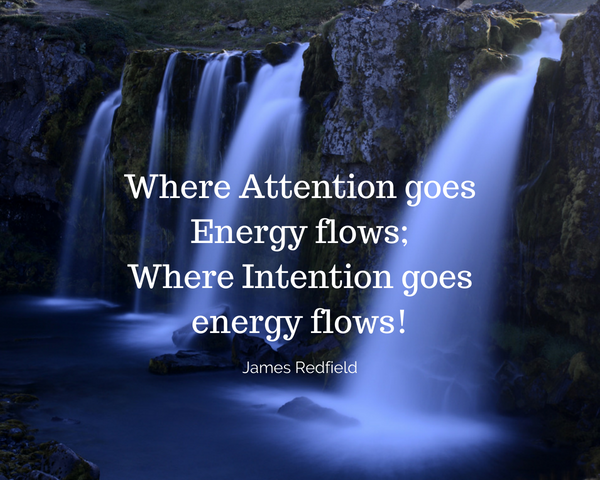If you were watching me at the Australian Meditation Conference last weekend .. you may have noticed a lot of head nodding and smiling, even occasional clapping. Inside my mind, there was a lot of hell-YES and hi-fives! The word that tied it all together for me:
CONNECTION
So, this morning, after meditation, I felt drawn to sit down and clarify some of the key takeaways, which I hope will continue to inform my own practice and how I share meditation with others.
*There is a primary human desire for calm and contentment – and connection
All humans seek peace within. We all want to avoid suffering and loneliness, and yet we are finding epidemic levels of depression, anxiety, and disconnection. Technological overwhelm, reduced personal interaction, lack of silence and reflection, and commitment to something bigger than ourselves, are all factors that have led to this rapidly growing sense of disconnect. So while almost all meditation traditions speak to Oneness and connection .. it’s not quite as simple as plugging into an App and learning to mindfully wash the dishes.
With a personal meditation practice of 25+ years, and teaching others to meditate for almost ten years, I recognize that people come to meditation for a host of unique reasons. Yet. Over the course of our journey together I find there is a consistent whisper and deeper underlying reason – a simple yearning for connection, belonging and tribe.
Connection, to self and others, in a world hungry for belonging and community – is the real gift of a regular meditation practice
*With Due Modesty
Listening to Dr. Nicholas Van Dam speak about his paper Mind the Hype: A Critical Evaluation and Prescriptive Agenda for Research on Mindfulness and Meditation was refreshing. And I appreciated the suggestion by Dr. Maura Kenny to consider, report and share any meditation or mindfulness research findings “with all due modesty“. I shall try to attend to this suggestion in the future.
I also feel that the enthusiasm for ‘modern mindfulness’ has fed into, and been nourished by, a hearty appetite in mass media for punchy and sensationalized headlines, and an eagerness for rapid ROI from large corporates: take a mindfulness lunchtime workshop and build inspirational leaders, heightened EI and enhance productivity. Oversimplified and exaggerated benefits of mindfulness.
While I enjoy reading the research, I have my own long-term practice to provide insight into the constantly unfolding benefits. When offering meditation and mindfulness training, participants can access some wonderful and often immediate benefits, which is certainly a great place to start. But it is just a start. If meditation is to be a change agent for ourselves and in the world, then it is not just something we can knock off in a workshop or 8-week course .. it’s a whole of life intention.
“A lot of people took (our study) to mean that you start meditating and boom, meditation cures everything instantly. That’s the implication that the media portrays — doesn’t matter what’s wrong with you, doesn’t matter who you are, you start meditating and everything’s OK. That’s clearly not the case.” (Sara Lazar, researcher, and professor of psychology at Harvard University).
Manage expectations. Do the practice. Conduct your own research.
*Right Mindfulness
There was quite a bit of discussion around the ‘commodification of Mindfulness’ .. and I think we have all seen the headlines suggesting the magical cure-all application of mindfulness incorporated into everything from therapy to manifesting wealth, to the purchase of mindfulness printer paper.
Alongside the call for more critical evaluation and rigor in mindfulness and meditation research, there is also the concern that modern mindfulness, having been subtracted from the philosophical/spiritual traditions potential leads to a lack of ethics, pastoral support, and community.
In the Buddhist tradition, there is the sangha, a community of like-minded friends who are there to walk with you, share knowledge and support practice. Without this ongoing support, how do we meet the inevitable challenges that arise in meditation? How do we cultivate connection, to self and others? In that traditional Buddhist framework, there is also a solid body of rules and training, that guide and inform our moral and ethical behavior. In the Eightfold Path, there are eight parts, each supporting the other: right view, right resolve, right speech, right conduct, right livelihood, right effort, right mindfulness, and right samadhi.
I support Right Mindfulness that is all about creating awareness in every aspect of your life: learning that every thought, action, word affects you, your relationships, your community, the world and the environment.
We don’t meditate to be good at the practice of meditating .. we meditate in order to walk out into the world the best version of ourselves. Find a good teacher and community. Seek to practice #RightMindfulness
*Embodied Cognition
I am keen to explore this further, the idea that the mind is not only connected to the body but that the body influences the mind.
“Mindfulness depends on the brain but isn’t inside the brain. Certain neural networks may be necessary for mindfulness, but mindfulness itself consists in a whole host of integrated mind-body skills in ethically directed action in the world. It’s not a neural network but how you live your life in the world” (philosopher Evan Thompson)
and finally .. a word from Jon Kabat-Zinn (the father of secular mindfulness) .. about the world that I hope to be a part of:

